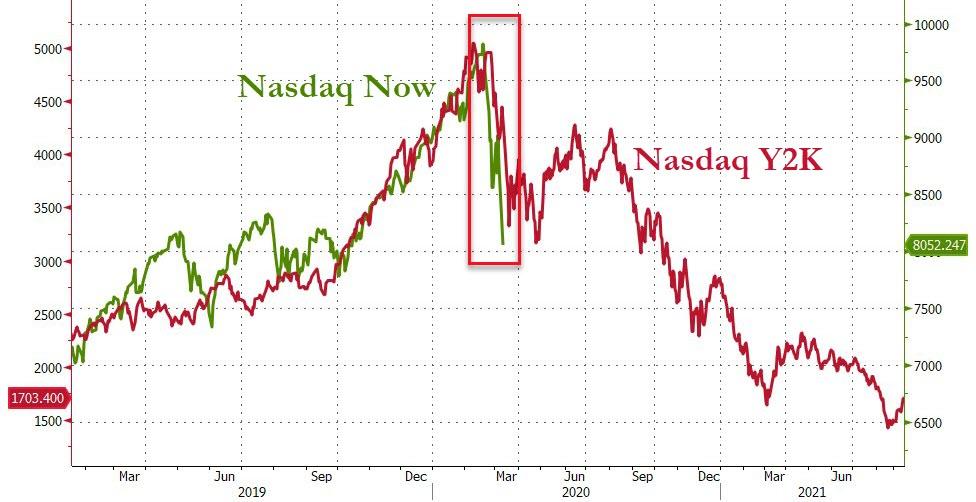Every mainstream source and including professional newsletters will say this is the time to stay calm and not panic and certainly not sell into a panic. While generally that is true, it does not mean it is correct across the board. It is often said because if everyone collectively panics, then we face sudden lost of market liquidity with no buyers and it becomes a self fulfilling prophecy. Which is why often the opening bell of the ASX after a big fall on Wall St is often the worst time to sell intra day because of pent up selling pressure built up just before the opening. So yes, no need to panic, just make sure you know how to take profits when they are there to be collected and not Assume anything (like the Fed put) although it may be a caution consistently made here but not taken seriously and is now the past , and we need to look forwards.
And so ok you didn't panic and we are told that markets always recover provided you have enough time to see the recovery. There you go, one qualifying factor- you have enough time. Then the markets could recover just like Nasdaq in 2000 see below only to crash subsequently. If this follows the same course as Nasdaq Y2K, continue holding is not the outcome you would expect , listening to "don't panic" (most people would take dont panic as meaning dont do anything instead of thinking to sell at a better opportunity), but of course we do not know if we are certain to go that way. And it may well not. But there could be that chance if like I said, the fire gets to the oil drums and when we get to know it, we would already be behind the curve. So we need to Assess and Anticipate and Be Ahead of the Curve- and being ahead of the curve does not mean selling now or later or even at all, it means making the appropriate assessment before the market decides for you. For example, what would be the prospects for companies with poor balance sheet or highly geared and/or with poor business fundamentals - that is easy, they may not survive and will get beaten down further , sell the dog before the fleas kill the sickened dog. Not only if you have time to recover, it is what you buy and when you buy it and how you see the economic and financial landscape to look like in the months ahead given the challenges (virus, oil, political etc) we now face.
And of course the market indices will over a long timeframe show an upward trajectory even after several periods of bear territory but fails to account for companies conveniently ditched along the way because either they underperformed or gone out of business altogether.
The big worry is that in the US, passive investing has been at all time high - people just buy ETFs or market darlings and assume that PE expansion will always be there for the growth stocks. Well, in a bear market, not only does the growth stock's EPS contract, the stock also faces a PE contraction. A growth stock with a EPS of $1.50 with 50x PE during a bull market gets a $7.50 price but during a bear, its EPS may contract by say 20% to $1.20 and PE contract to just 20x giving a price of just $2.40 and you see a fall of $5.10 or 68% fall ! The assumption that growth stock can continue to enjoy a 50x PE could blindside market participants completely who fail to understand that Assumptions are Fluid, not Static.
There is no free lunch- market participants need to invest in knowledge and understand what they're doing to invest in stocks (particularly risk management and understanding risk/reward)- the rest is just gamble and speculation, which is just like buying lottery with better odds.

- Forums
- ASX - General
- Its Over
Every mainstream source and including professional newsletters...
-
- There are more pages in this discussion • 20,178 more messages in this thread...
You’re viewing a single post only. To view the entire thread just sign in or Join Now (FREE)
Featured News
Featured News
The Watchlist
LU7
LITHIUM UNIVERSE LIMITED
Alex Hanly, CEO
Alex Hanly
CEO
SPONSORED BY The Market Online









